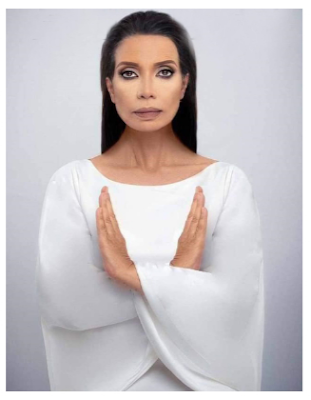The Pharaonic era, with its rich history and captivating culture, continues to intrigue and inspire people worldwide, one aspect that has particularly captured the imagination is the attire and beauty standards of pharaonic women. From elaborate headdresses to intricately woven garments, the clothes reflects not just their fashion sense, but also their societal status and cultural identity, ancient Egyptian women were known for their keen interest in beauty and fashion, using cosmetics, jewelry, and clothing to enhance their appearance. They adorned themselves with intricate jewelry made from precious metals and stones, and their clothes were often made from fine linen, with colors and styles varying depending on different occasion.
As Christian Desroches Noblecourt mentioned in his book The “pharaonic Woman” that she was concerned with styling her hair and elegant clothes, with the passage of time, the styles and shapes of clothes and adornments changed in terms of materials and shapes, as they were always essential elements in her adornment that the presence of flowers on her clothes or hair, which was differed according to different historical eras, and social classes level.
In some eras, wigs surrounded the faces in the form of a short clump, ribbons and flowers complemented this adornment. The forms of clothes changed from time to time from open clothes to
modest clothes, and simple slippers were tied with short thongs were worn by the most affluent women
during the New Kingdom. The use of sandals became common in the Ramesside era, their shape
became characterized by an upward front, and were made of white and colored leather, or even some
gold may be added to decorate them after plastering.
In recent years, there have been a noticeable trend among female artists and public figures in
Egypt to reclaim this ancient heritage, particularly in the way they dress. Influential women have
been a resurgence of interest in Pharaonic fashion, with female artists and influencers embracing
this ancient style and incorporating it into their modern wardrobes. Leading this movement are figures like Sawsan Badr, Nelly Karim, Basma, and Yousra have been seen donning modern interpretations of Pharaonic attire, paying homage to the rich history of their ancestors, who have not only embraced Pharaonic fashion but have also become ambassadors for this cultural revival.
The writer Tahia Kamel Hussein mentioned in her book “Egyptian Fashion from the Pharaohs to the Era of Muhammad Ali”, that because the Egyptian women were beautiful, they were keen to add more aesthetic touches, using cosmetics that were almost no different from what is produced by major contemporary cosmetic companies, wearing elegant clothes, and adorning herself
with all kinds of jewelry.
Drawing on the wall of temples clearly shows the extent of the Egyptian woman’s interest in her elegance and her care in choosing models and designs that highlight the charms of her body.
The fashion of pleated pleats is common in most fashions, women used the skirt in its simplest form, ,it consists of a straight piece of cloth fastened with a ribbon that is wrapped around the middle, one or more times, one end hangs from the front below the knee, a cover for the shoulders is worn with this garment, it is simply a cape made by another straight piece of cloth, placed on the shoulders from the back, its end dangles, and hang over the chest, it is knotted and then decorated with a collar (which is the jewelry) that extends from the neck to the shoulders to chest. The collar was made with beads of different beautiful shapes, arranged in special wires , these beads are made of painted ceramics, semifat
stones, or gold.
 The dress accompanied with accessories on hand, chest and heels show the elegance of the design.In the latter time at the eighteenth dynasty, another wide garment appeared and rarely found before that time it covers the shoulders, chest, and upper part of the arms — and consists of a piece of cloth twice as wide as the person’s height, this cloth is folded in half and an opening is left in it at the neck, the sides are sewn, and sometimes left open, the two ends of the robe are joined on both sides and tied with a
The dress accompanied with accessories on hand, chest and heels show the elegance of the design.In the latter time at the eighteenth dynasty, another wide garment appeared and rarely found before that time it covers the shoulders, chest, and upper part of the arms — and consists of a piece of cloth twice as wide as the person’s height, this cloth is folded in half and an opening is left in it at the neck, the sides are sewn, and sometimes left open, the two ends of the robe are joined on both sides and tied with athin ribbon hanging from the front, leaving the back without folds, or the ends of the two sides are tied with a knot directly under the chest.
This resurgence of interest in pharaonic fashion can be seen as a form of cultural reclamation, as artists seek to revive and celebrate a part of their heritage that have been overshadowed by more contemporary influences.
The interest of Egyptians in their ancient Egyptian culture were extended to students’ university.
The 30nd batch in Minya Medicine for the year 2021 students celebrate their graduation ceremony by making a photo session by wearing pharaonic clothes and accessories. It was a new, impressive, unusual idea and Out of the ordinary.



